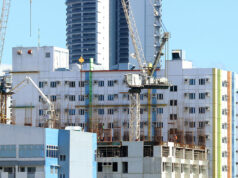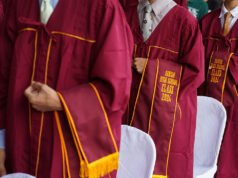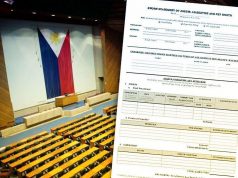Tugade cites hurdles for planned BRT in Cebu, Metro Manila
By Denise A. Valdez
TRANSPORTATION Secretary Arthur P. Tugade reiterated his doubts about the promise of bus rapid transit (BRT) systems in Cebu City and Metro Manila as a means of decongesting road.
Speaking at the Asia CEO Forum in Pasay City, Mr. Tugade said that BRTs might not be suitable for congested cities like Cebu City and Metro Manila.
“Can you dedicate one more lane in a place where there are only three lanes? Can you dedicate a lane in a system like EDSA where you have six lanes but already overcrowded? Of course you will say, ‘Expand the road.’ That is easier said than done,” he said.
He added, “I’m not an engineer, but my common sense tells me, I hope someone will enlighten me, how can I dedicate a road for a system that is not even tested? Three lanes and you use one lane for BRT?”
The Cebu BRT is a 23-kilometer line traversing the central business district. The $141-million project was originally scheduled for launch in 2018, but was put on hold by the Department of Transportation (DoTr) last year.
Mr. Tugade believes the BRT will not be succeed in getting professionals to abandon the use of private cars in favor of commuting by bus, because “cars do not only serve as a mode of transport, but also signal social (status).”
“In the Philippines, people will buy cars first before they buy a house. People will buy two to three cars first before they buy a house,” he said, noting that persuading them to choose the BRT over their cars is “easier said than done.”
He clarified, however, that his decision is not yet final. He said, “higher authorities” have instructed him to engage technical consultants to review the project, which is now ongoing.
In a phone call to BusinessWorld, Cebu City Mayor Tomas R. Osmeña expressed his disappointment with the comments of Mr. Tugade, saying he was “unprofessional” and is “oversimplifying the situation.”
“He said the roads are too narrow. That’s precisely why we need to put buses… If the roads are wide, we don’t need a BRT. It’s 10 times cheaper than a light rail transit,” he said.
He added the city has been working with the World Bank since 2008 to study the feasibility of the BRT system in Cebu. Thr World Bank has committed $116 million for the project.
“Who is Tugade to say it is not feasible when the World Bank not only says it’s feasible but is also putting their money where its mouth is,” Mr. Osmeña said.
In 2017, Presidential Assistant for the Visayas Michael Lloyd L. Dino pushed for a light rail transit (LRT) system in Cebu City and the cancellation of the BRT project. This proposal has the support of Mr. Tugade.
“If you want to improve the traffic flow in a place, you can either do it on ground, or underground like a subway, or overground like an LRT or MRT. But not BRT,” he said, adding that a basket of solutions is needed to address road congestion.
Mr. Osmeña said BRT systems have been proven effective in decongesting roads in New York and Chicago.
The National Economic and Development Authority Investment Coordination Committee (NEDA-ICC), which will have the final say on either project, said it will consider all sides. Cebu paper The Freeman has reported that NEDA-ICC has not approved an LRT project yet, and may take years to do so.
Two more BRT lines in Metro Manila are among the government’s projects. The Department of Finance said in January that the government has allotted P37.76 billion for the construction of the BRT EDSA line, and P5.47 billion for the BRT España-Quezon Avenue Line.



